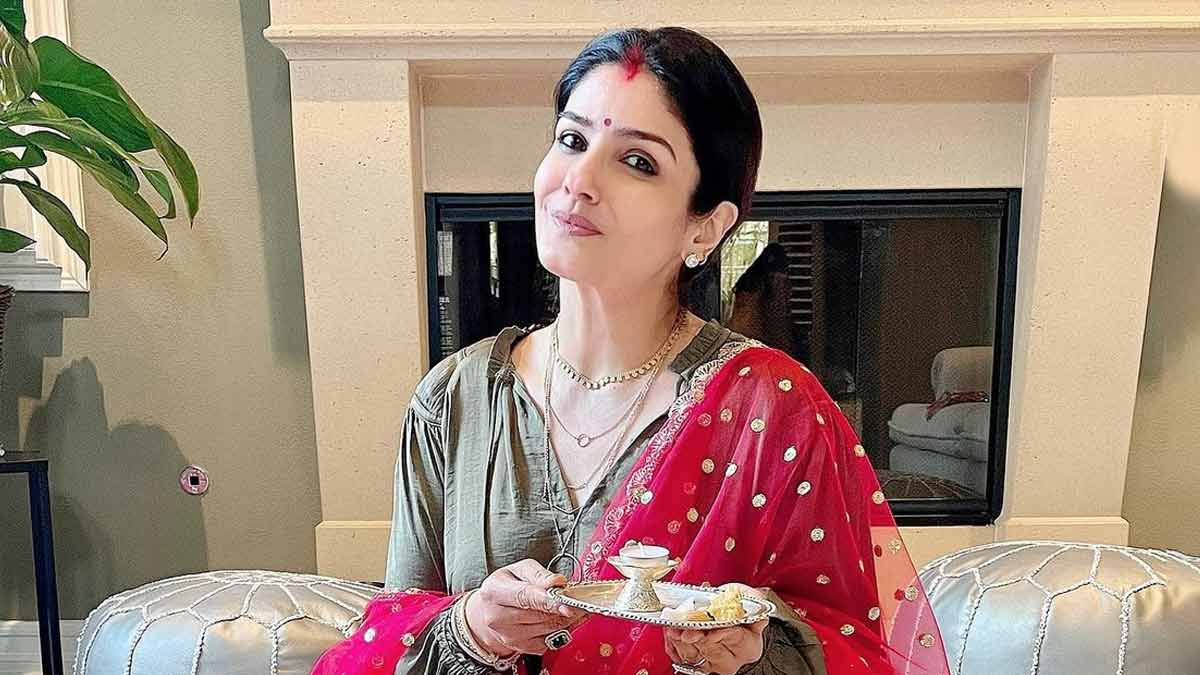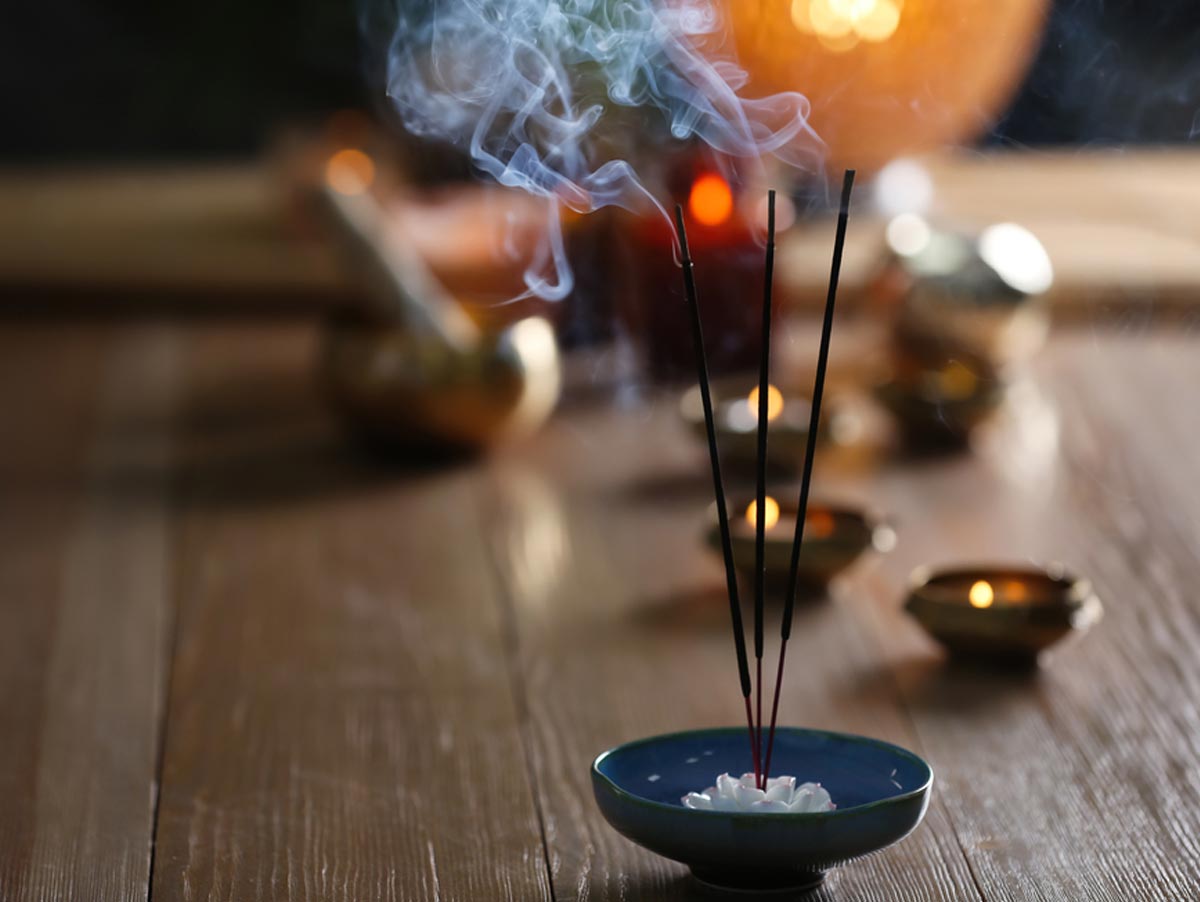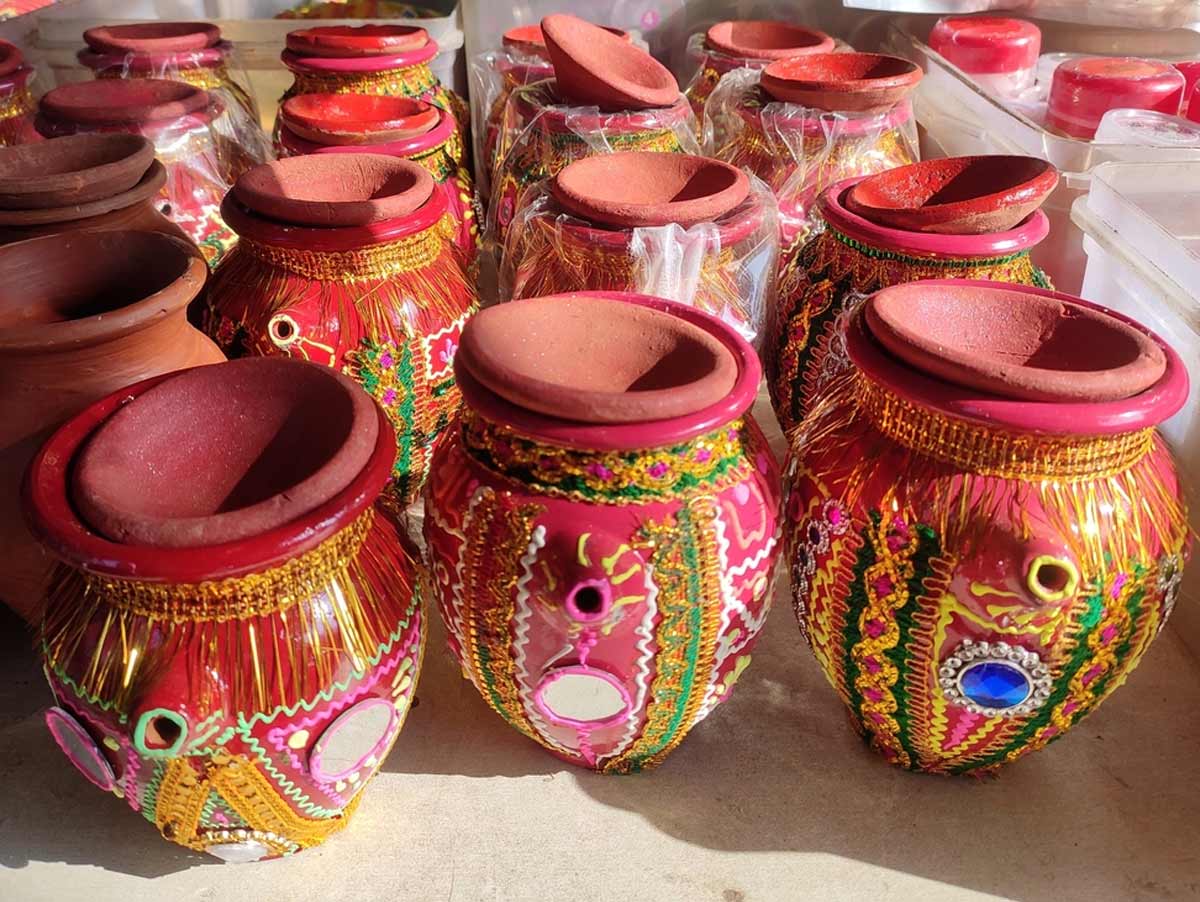
Karva Chauth: Significance Of Samagri Used In This Auspicious Festival
Karva Chauth, a Hindu festival is celebrated to recognise the importance of marital ties. In ancient times, the festival began so that women could pray for the safe return of their husbands who went on wars in far-off lands. The end of harvest season is also marked by the festival. It is mainly celebrated in North India, in states like Uttar Pradesh, Himachal Pradesh, Rajasthan, Punjab and Haryana.
The festival involves a puja (prayer) using various articles that hold different meanings. Here we elucidate the importance of each piece:
Karva (Earthen Pot)
Karva Chauth is dedicated to Goddess Parvati, Lord Shiva, and their son Kartikeya. According to Hindu tradition, the earthen pot filled with sweets is worshipped and dedicated to the gods and goddesses.
Moreover, the pot should have a spout because it is used by fasting individuals to offer water to the moon as a part of the festive ritual.
Channi (Sieve)

The sieve is used to cover the face and is a symbol of paying respect to the moon. Hindu traditions emphasise the use of ghoonghat to pay respect to elders, thus the sieve works on the same principle.
Another belief is that praying to the moon for its blessings through filtered rays brings blessings of happiness in one’s life.
Sindoor or Kumkum (Vermillion)
A dash of vermillion donned on the bride’s hair parting symbolises the beginning of her married life. It validates her marital status and is put on by her husband during marriage, thus becoming an important part of Karva Chauth, which is celebrated for the partner’s health and wellbeing.
1
2
3
4
Don't miss:Here Is How Famous Celebrities Have Celebrated Their Karwa Chauth
Kalawa (Strand of Red Thread)
According to ancient Hindu scriptures, tying the holy red thread is deemed to protect from evil forces. Tying this on the wrist helps to prevent any possible harm.
It also makes the person receive the blessings of the Hindu holy trinity–Brahma, Vishnu, and Mahesh.
In the Vedas, Indrani Shachi tied a red thread to the right wrist of Indra Dev (God of Rain) before he was going to battle Vratasur. The war ended with him gaining victory.
Diya made of Atta (Lamp made of Flour)
The light ignited in the Diya is symbolic of good vibes. Moreover, the frequencies emitted through a flour-based lamp negates the negative energies in the surroundings, thus ensuring a healthy and happy life for the couple participating in the prayer.
Dhoop or Agarbatti (Incense Sticks)

The introduction of an incense stick in prayers is to induce pleasant fragrances and to cleanse the air of negative energy, according to Hindu mythology. The ashes of burning incense sticks are collected later to inspire sacrifice of one’s self for others.
Karva Chauth Story Book
The Katha (Story Book) narrates the history behind the festival. It is important to recite during the puja to create awareness about the origins and reasons behind the celebration.
Don't miss: Here Is An Impressive Saree Guide For Your First Karva Chauth
Matthi for Bhog (Offering)
Matthi or Mathri is a flaky bread munchie made with Indian spices. It has a crunchy texture to it and is used as an offering to the dedicated God and Goddesses during processions. In different states, it is made with different ingredients such as gur (sugar), spices, and salt. It is said to be enjoyably eaten by both the deities and devotees.
Also Watch:
1
2
3
4
